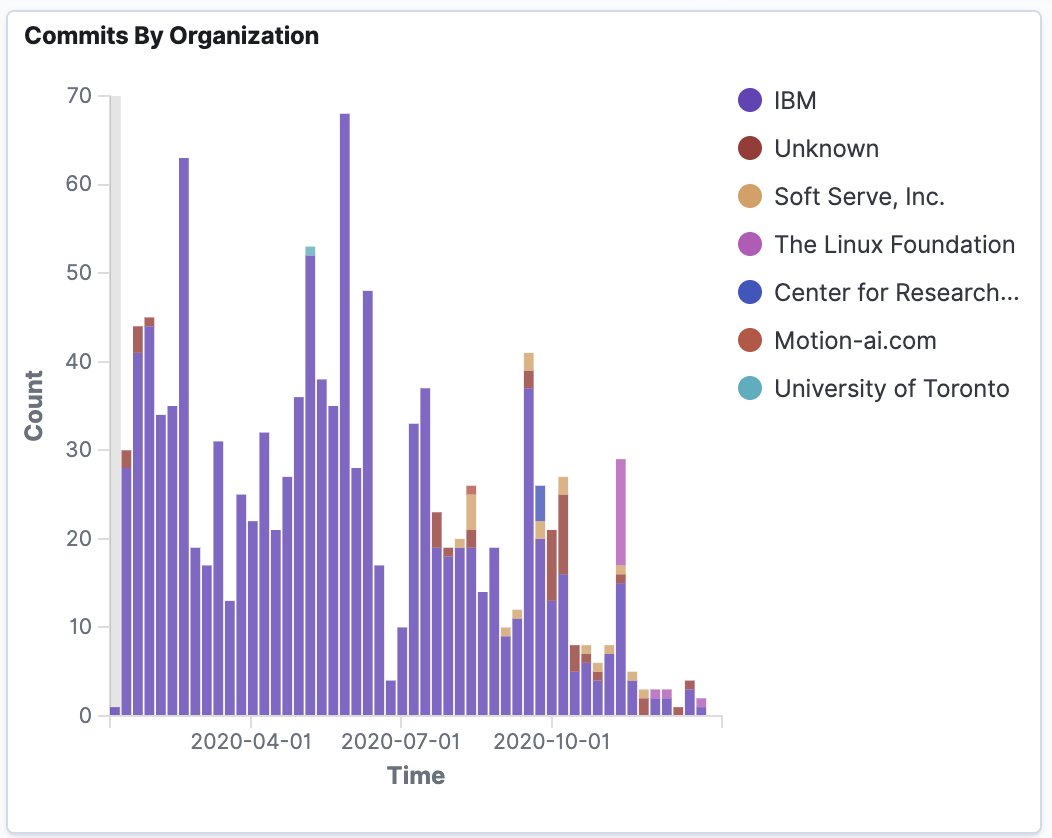Status
- Presented to the TAC:
- TAC Project Review:
- TAC Vote Approved:
- Governing Board Vote Approved:
Project Resources
- Web site: https://www.lfedge.org/projects/fledge/
- Wiki: Fledge Home
- Analytics: https://insights.lfx.linuxfoundation.org/projects/lfedge%2Ffledge/dashboard
- Communication & support: LF Edge Slack, automatic invite if you have no account there
- NOTE: Fledge’s official Slack channels are all prefixed with "fledge”
- Mailing Lists and Calendar: LF Edge groups: https://lists.lfedge.org/groups
- Fledge: https://lists.lfedge.org/g/fledge
- Fledge TSC:https://lists.lfedge.org/g/fledge-tsc
- YouTube playlist: https://www.youtube.com/playlist?list=PLgohd895XSUeQyifp-kq_xEUqGFLCFGgJ
- Mentorship Program:
Stage Two: Growth Stage
Definition
The Impact Stage is for projects that have reached their growth goals and are now on a self-sustaining cycle of development, maintenance, and long-term support. Impact Stage projects are widely used in production environments and have large, well-established project communities with a number of contributors from at least two organizations.
Examples
- Projects that have publicly documented release cycles and plans for LTS.
- Projects that have themselves become platforms for other projects.
- Projects that are able to attract a healthy number of committers on the basis of its production usefulness (not simply 'developer popularity').
- Projects that have several, publicly known, end-user deployments.
Expectations
Impact Stage projects are expected to participate actively in TAC proceedings, and as such have a binding vote on TAC matters requiring a formal vote, such as the election of a TAC Chair. They receive ongoing financial and marketing support from the Foundation, and are expected to cross promote the foundation along with their activities.
Acceptance Criteria
To graduate from At Large or Growth status, or for a new project to join as an Impact project, a project must meet the Growth stage plus Impact stage criteria:
Growth requirements:
- Development of a growth plan (to include both roadmap of projected feature sets as well as overall community growth/project maturity), to be done in conjunction with their project mentor(s) at the TAC.
- Document that it is being used in POCs.
- Demonstrate a substantial ongoing flow of commits and merged contributions.
- Demonstrate that the current level of community participation is sufficient to meet the goals outlined in the growth plan.
- Demonstrate evidence of, or a plan for, interoperability, compatibility or extension to other LF Edge Projects. Examples may include demonstrating modularity (ability to swap in components between projects).
- Since these metrics can vary significantly depending on the type, scope and size of a project, the TAC has final judgement over the level of activity that is adequate to meet these criteria.
- Receive a two-thirds vote of all TAC representatives that do not abstain the vote and a majority vote of the Governing Board to move to Growth Stage.
Impact requirements:
- Have a defined governing body of at least 5 or more members (owners and core maintainers), of which no more than 1/3 is affiliated with the same employer. In the case there are 5 governing members, 2 may be from the same employer.
- Have a documented and publicly accessible description of the project's governance, decision-making, and release processes.
- Have a healthy number of committers from at least two organizations. A committer is defined as someone with the commit bit; i.e., someone who can accept contributions to some or all of the project.
- Demonstrate evidence of interoperability, compatibility or extension to other LF Edge Projects. Examples may include demonstrating modularity (ability to swap in components between projects).
- Adopt the Foundation Code of Conduct.
- Explicitly define a project governance and committer process. This is preferably laid out in a GOVERNANCE.md file and references a CONTRIBUTING.md and OWNERS.md file showing the current and emeritus committers.
- Have a public list of project adopters for at least the primary repo (e.g., ADOPTERS.md or logos on the project website).
- Other metrics as defined by the applying Project during the application process in cooperation with the TAC.
- Receive a two-thirds vote of all TAC representatives that do not abstain the vote and a majority vote of the Governing Board to move to Impact stage. Projects can move directly from At Large to Impact, if they can demonstrate sufficient maturity and have met all requirements.
Compliance with Requirements
At Large
| Requirement | Evidence |
|---|---|
| Two TAC sponsors | Joe Pearson (IBM), Jim St. Leger (Intel), Anil Vishnoi (Red Hat), Henry Lau (EdgeX Foundry) |
| Presentation to the TAC | Original presentation deck and recording from March 11, 2020 |
| IP Policy: licenses for code and documentation, DCO for contributions |
|
| List project (Stage One) status on web site or README | Updated LF Edge project page to reference (thanks, Brett!) |
| >= 2/3 approval vote of TAC & majority of Governing Board SPC |
|
Growth
| Requirement | Evidence |
|---|---|
| Used in PoCs |
|
| Substantial ongoing commits and contributions | Chart from https://tinyurl.com/yykvcfg5 showing commits over the last year. Notice that the diversity of organizations making commits increased quite a bit beginning in the July timeframe, two months after we officially became an LF Edge project. Attached are a few slides showing highlights of 2020 project stats. |
| Growth plan | Growth plan for 2021:
|
| Community participation meets growth plan goals | Growth plan for 2020:
|
| Evidence of interoperability, compatibility with other LF Edge projects |
|
| >= 2/3 approval vote of TAC & majority of Governing Board |
